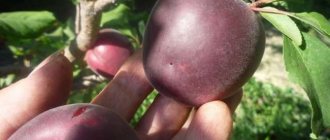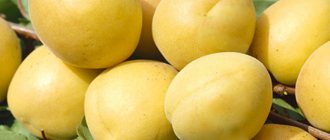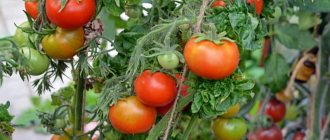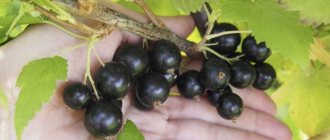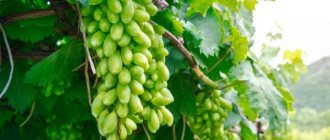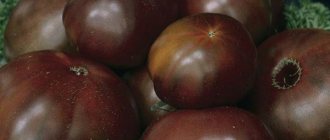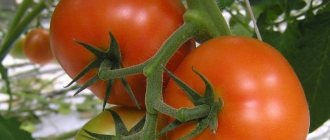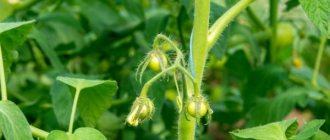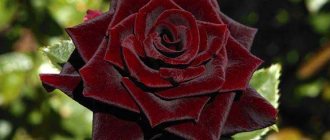Apricot selection does not stand still. Experts are constantly looking for ways to improve the type and conduct experiments by crossing them with other stone fruits. As a result, such fascinating hybrids arise as black apricot, which was bred by crossing the common species and cherry plum. In the same way, it has another name - apricot soalycha.
Description of the plant
This species inherited from the cherry plum a delayed time frame for flowering, as well as a similarly slow spring formation. But this is more of an advantage than a disadvantage: such a growing season favors the most constant fruiting and sustainability of the crop, since the crop, due to the delayed appearance of flowers and ovaries, is protected from the spring cold. Because of this characteristic, there are famous attempts to grow the type in central Russia, in the Moscow region.
Since by seed propagation it is possible to extract seedlings that are most adapted to the harsh conditions of the “Russian winter”. The tree is of normal growth, most likely looking like a large bush. During growth and formation, its fruits are greenish, but closer to the ripening period they acquire a dark brown color. It is thanks to cherry plum that the fruits are small in size and slightly sour, however, they have an apricot aroma, which very often misleads non-specialists. Apricot soalycha can be consumed both fresh and rolled up, purchasing compotes and jams.
Another individuality is that it is self-pollinating. The majority of apricot varieties require cross-pollination, that is, you need to plant a couple of apricot trees in the garden or at your summer cottage so that they pollinate each other; otherwise, you may not get a harvest from a lonely growing tree. However, many gardeners do not have the opportunity to grow a couple of type 1 seedlings at once. But apricot apricot pollinates itself well and does not require other apricots for this, but besides this, it is perfectly pollinated by cherry plum, plum and ordinary apricots, and this is also a plus.
Where did these hybrids come from - black apricots?
Black apricots (not actually jet black, but red-purple or deep purple) are not the result of deliberate efforts by breeders. The new hybrid was the result of accidental cross-pollination of apricot and cherry plum. From the first it inherited the characteristic aroma of the fruit, from the second - a seed, which is problematic to separate from the pulp.
Breeding achievements of nature sometimes turn out to be more successful than the results of the focused work of specialists, black apricots are evidence of this
Experts have improved nature's selection achievements. Black apricots have many undoubted advantages:
- the latest flowering among all stone fruits (as a result, the risk of falling under return frosts is minimized);
- good immunity against moniliosis, cytosporiosis, clasterosporiasis;
- frost resistance of both the tree itself and the buds (leaf and flower) due to the longer duration of winter “hibernation” on average down to -30°C;
- almost annual fruiting with rare breaks (due to high frost resistance and unpretentiousness);
- good yield (30–40 kg in optimal conditions, up to 20 kg in more severe climates);
- self-pollination of most varieties (the tree does not need “companions” for the mass formation of ovaries);
- in most cases - slow growth, compact crown (black apricot is more of a bush than a tree, reaches a height of 2.5–3 m, the crown is not prone to thickening);
- good adaptability (the ability to develop in different types of soil, produce crops when there is a lack of heat and light in summer, tolerate waterlogging and drought).
Late flowering of black apricots in regions where return spring frosts are not at all unexpected increases the likelihood that the flowers will not be damaged by cold weather
They also have disadvantages:
- the taste of apricots (they are not honey-sweet, but noticeably tart, with noticeable sourness, but they make wonderful homemade preparations);
- fruit size (smaller than a classic apricot, slightly larger than a cherry plum);
- watery and noticeably fibrous pulp, difficulty separating the stone.
Black apricot jam turns out unusually dark, but amazingly tasty and aromatic
Based on the description of the hybrid, we can conclude that black apricot is a suitable crop for central Russia, where classic orange apricots do not always survive. Its harvests are even obtained in the Urals and Siberia.
Video: what are apricot-cherry plum hybrids
Black apricot varieties
A prominent adherent of the varietal types of black apricot is Shpor Tsiran, an Armenian variety that served as the basis for the development of new crops. Domestic selection is presented by fascinating types of black apricot, a characteristic feature of which is their adaptability to the climatic conditions of the middle zone: these are Black Velvet, Black Prince, Black Peach, Melitopol, Black Kuban, Korenevsky Black, Lugansk Black, Mouse.
Apricot Black Prince description
The variety was excluded at the Artemovsk Experimental Station of Horticulture and Viticulture (Donetsk region) in the mid-2000s. It has earned its reputation with very large and tasty fruits. Important properties of the Black Prince:
- Large fruits from all types of black apricot - have every chance of reaching 80 g;
- The peel is compacted dark red or cherry in color, the flesh is soft, juicy, bright orange or wine red in color;
- The bone is small and easily separated;
- The taste is juicy, sweet, apricot;
- Not bad yield - reaches 35 kg per tree;
- The tree is very tall - reaches 4 m, but is not dense. Individuality is considered to be the growth of thorns on the branches, somewhere in the 5th year after planting;
- Self-fertile plant;
- Early fruiting - bears fruit already in the 2nd year after planting;
- Stable against diseases and pests.
The Black Prince's flaw may be a slight frost resistance. In the central regions it will have to be additionally insulated.
Apricot black velvet description
Bred at the breeding station named after N. Vavilov in the city of Krymsk (Krasnodar Territory). Already in 2006 it was included in the State Register. It is characterized by high and stable yields and long-lasting fruit storage. Main properties of Black Velvet:
- the fruits are small - up to 35 g, round in shape;
- the peel is dense, velvety, blue-violet in color, the pulp is fibrous, juicy, deep yellow, the stone is small, difficult to separate;
- the taste is slightly sour, reminiscent of cherry plum;
- the tree is low, not dense;
- self-fertility is low, improved by cross-pollination with a plum, thorn or a bee becomes a pollinator;
- bears fruit in 3–4 years;
- winter-hardy variety - the hardiest among all varieties of black apricots;
- does not tolerate drought well;
- resistant to diseases and insects.
It is advisable to harvest apricots gradually, at the end of July - beginning of August, when they are ripe. In such a stay, they are stored for a long time and are well transported. In a couple of days the fruits will ripen on their own. If you wait for full ripeness, it is possible to waste a significant part of the harvest - the fruits fall off in a couple of days, and their quality deteriorates.
History of growing apricot Black Prince
Initially, apricot grew only in warm climates, where there were no spring frosts that could destroy the early harvest. Breeders tried to develop a variety for resistance to frost and without losing the taste of the fruit. Honored biologist and breeder I.V. Michurin also tried to develop an improved apricot variety at the beginning of the last century.
On the territory of Ukraine in the Donetsk region, breeders managed to cross apricot with cherry plum using cross-pollination. The result was the Black Prince Apricot variety, which produces a stable harvest. It is intended for cultivation throughout almost the entire territory of our country, including northern regions with cold climates.
Features of growing and caring for crops
Growing a black apricot is no more difficult than a regular one. It lends itself to the usual rules of agricultural technology and does not require any special care measures. We will briefly describe them, paying close attention to the specifics inherent in these varieties.
Landing
Black apricot loves bright places, protected from frosty northern and eastern winds. The best option would be the south side of the garden.
This is the first and, therefore, the main stage in the life of a tree. It happens by choosing the place where the apricot will grow. The following requirements are presented to him:
- dry, without stopping water and nearby groundwater;
sunny, well weathered;
- protected from frosty northern winds;
- with loose, well-drained soil (the composition is not critical).
Such needs are most reliably met by a place on the southern or southeastern slope of the hill. Either it has natural protection on the north or northeast side: a fence, a building wall, dense trees.
In the fall, a planting hole is prepared, loading it with a nutrient mixture. And black apricot is planted in early spring (before the buds bloom) as a one- or two-year-old seedling. After planting, the tree is cut off by 60–80 cm, the branches are shortened by 30–40%.
Watering and fertilizing
Water the apricot 3-4 times per season. A young tree may require more frequent watering. Moisten the soil to a depth of 30–40 cm. The next day loosen and mulch. Fertilization begins 3–4 years after planting. Organic matter is applied at intervals of 3-4 years, mineral and complex fertility - every year. Potassium fertility increases in May - June, nitrogen - in spring and summer, phosphorus - in autumn. Organic, nitrogen and phosphorus fertility is brought under digging. Potassium is diluted in water and used for irrigation. Complex ones have every chance of being both applied to the ground and used for foliar fertilizers.
Trimmings
All types of pruning (formative, sanitary, regulating, supporting) are performed on black apricots in the same way as on ordinary ones. A characteristic feature is considered to be the formation of the crown: for black apricots, it is made in the form of a “bowl”. This shape of the crown requires constant thinning and chasing of young shoots.
Preparing for winter
Despite the very high frost resistance of the Black Prince compared to other types of apricot, it needs to be prepared for wintering. First of all, the gardener needs to clear the tree trunk circle of debris and fallen leaves. Afterwards, the lower part of the trunk is bleached with a solution of slaked lime with the addition of office glue and copper sulfate. This will save the pampered bark of the Black Prince from the attacks of small rodents.
To protect the large-root system from extreme cold, the tree trunk circle is covered with humus. A mound 20–30 cm high is created around the trunk. Young plants can be completely covered with cardboard boxes or wrapped in burlap and agrofibre. It is very important to use only materials that are highly breathable. Otherwise, the apricot may die from damping off.
Characteristics
Black apricot samtabricot
Black apricot is a rare species. It is a hybrid of apricot and apricot. It has smaller fruits and a darker color. Sometimes there is another name - apricot and lye.
Flowers late, but regularly. The hybrid is well protected from premature frosts. The tree is not tall, it is a large shrub. The fruits are initially green, but by the time they bear fruit they turn brown or slightly blue.
The cherry plum hybrid inherited its small size and sour taste, while the apricot inherited a pleasant sweet taste. The fruits can be eaten fresh, as well as cooked and canned.
Fun fact: Mouse is a new dwarf variety. It is even grown in bathtubs.
Diseases and pests
Pests damage apricot fruits, the crown of leaves, bark, roots and other parts. Gardeners recommend inspecting plants for foreign insects and traces of their presence - cobwebs, colored spots, local destruction of the tree bark. If there is any suspicion that parasites have appeared near the apricot or in the plant itself, it is necessary to additionally treat it with special means. Such unplanned cases are separately described in the instructions for use for concentrated mixtures of drugs.
Moniliosis, also called fruit rot, is a fungal disease. It manifests itself at the beginning or end of flowering - some of the leaves and inflorescences fade. Forms brown spots on the fruits and then small yellow pads appear on them. It is treated with drugs such as Rovral, Abiga-Pik and Gamair; Bordeaux mixture can also help.
Gum treatment. This is a non-infectious disease that occurs by secreting a tar-like, thick, amber-colored liquid. It has a bitter and viscous taste and occurs on the aerial parts of the apricot. The disease can be eliminated by avoiding injury to the tree. Effective prevention is considered to be the correct choice of variety; it is important that it be zoned.
Balsa mushroom. A similar infectious disease, like Balsa Mushroom, is detected by sores on the bark of apricot. It is treated with the substance of the concentrated drug Switch according to the instructions. The treatment must be carried out at least 1–2 weeks before harvest.
Possible mistakes
The most common mistakes made when planting and caring for apricots are incorrect application of fertilizers and pruning while the plant is dormant. If the gardener prefers compost, manure or chicken droppings as fertilizer, then apply them with caution.
Compost is added to the soil according to the formula 5.5–6 kg per square meter. m, mixed with mineral fertilizers. Manure, like other organic fertilizers, is applied no more than 2–3 times a year at the rate of 3.5–4.5 kg per square meter. m. It also must not be concentrated. Chicken manure is added as an admixture to the compost with a total mass of approximately 300 g per square meter. m. If you introduce concentrated droppings or simply dilute it with water, it is possible to cause a chemical burn to the tree.
Some of the most common mistakes include:
- Insufficient level of agricultural technology. It is necessary to provide the tree with timely watering and fertilizing.
- Incorrectly created power supply scheme. For example, a lack of microelements or a violation of NPK.
- Not prepared for winter.
- Inaccurate cutting.
Compliance with all planting techniques and specifics for caring for apricots makes it possible to grow a strong and healthy tree. And in just a couple of years you can enjoy delicious, juicy and aromatic fruits from your own garden.
Growing technique
apricot seedlings
Hybrid and conventional agricultural machinery are very similar. The only thing you need to do is follow the planting instructions:
Seedlings are best suited for growing in sunny areas; You should choose a place protected from wind and drafts; Groundwater should not flow near the surface, otherwise the roots will rot.
In spring, the snow cover should not be very large, otherwise the underlying trunk may rot. If groundwater is very close and there is no other place, gardeners recommend using special barrels without soil.
Interestingly, black apricot grows well without a lot of fertilizer.
First they make a hole, then they drain the water. Then they prepare the bottom for the barrel. Add sand, humus, compost and peat. The barrel should be 50 cm above the ground.
Using a drum helps protect seedlings from both groundwater and large amounts of snow. Apricots need good watering. After mid-summer, the plant no longer needs watering, as this promotes shoot growth and prevents them from maturing in winter.
As the shoots begin to grow, they may become trapped in the fall. However, this leads to the growth of new shoots, which must also be pinched.
A good Laffoll prepares the plant for winter. You can also speed up the treatment process yourself: Pollination is carried out with wood ash. Apricots can be burned in the sun in autumn, summer and spring. To avoid them, it is recommended to lime the trees with a special solution containing copper sulfate. This should be done in early spring and late autumn.
Note: Gardeners are advised not to wait for the fruits to ripen, but to lightly tear them off. Then the fruits should be left for several days. This way you can get sweet and aromatic fruits.
Black apricot is not yet very popular in our country. However, they are suitable for beginners: It is easy to take care of and the fruit will delight you with delicious meat that looks like cherry plum with apricot flavor.
Next, we bring to your attention a video about black apricot varieties:
Page 2
Apricot is a large, heat-loving tree. It has sweet fruits that are simply impossible not to love. They can be used to prepare delicious fruits:
traffic jams traffic jam I saw. compotes juices dried fruits tinctures
This fruit contains many healthy vitamins and consuming it frequently will keep you fit and bright. There are many different varieties and types of apricots.
There are early, middle and late. The fruits of different varieties have different shapes, colors, textures, smells and tastes.
This is also different from caring for a tree. But which type do you still think is the best? Based on feedback from experienced breeders, we can distinguish three main varieties: Melitopol, pineapple and royal.
Benefits of black apricot
Apricot fruits have a significant effect on digestion, thin mucus in dry coughs, and act as a gentle laxative and thirst quencher. It is advisable to use these fruits for stomach diseases and metabolic disorders. Apricots increase mental performance and improve memory due to their high phosphorus and magnesium content. Fresh ripe fruits are high in fiber and low in calories and are a good source of beta-carotene (an antioxidant that, according to modern research, prevents the development of cancer and heart disease).
Melitopol early
Apricot "Early Melitopol".
The tree is medium in size and has a wide crown. Compared to the also popular Red Cheek apricot, it has higher winter hardiness. Apricot seedlings "Melitopol" begin to bear fruit from the fourth to fifth year after sowing.
The fruits are medium, 30-45 g, oval, almost round. The skin of the apricot is thin and bright orange with a delicious reddish red on the sides. Inside the fruits are fleshy, medium-heavy pieces, the juicy flesh has a strong aroma and a very sweet taste.
Dignity:
early; although the fruits are moderate in size, the tree has a high yield; The fruit is sweet, the structure is dense.
Interestingly, the apricot began to exist on earth about 6,000 years ago.
This is a good choice for regions with cold and long winters. It is more frost-hardy than other apricots, which means that even after freezing you will get a good harvest.
Apricot “Late Melitopol” (end)
The late-ripening variety was obtained by crossing two other varieties - “Red Cheek” and “Khurmay”. It is considered to be a fast-growing tree with a wide and thick crown. Four to five years after planting, it begins to bear fruit.
It is interesting that the fruits of the late “Melitopol” differ from the earlier ones. In this case they are larger, 40-60 g. They are oval in shape, slightly compressed at the sides, with small sharp beaks at the ends.
Even the late apricot skin is different. It is thick and thick, orange with a soft redness. The fruits are less juicy, but sweet. They have low acidity.
Interesting fact: the apricot tree grows up to 100 years. Most varieties are resistant to drought and frost.
The flesh of the orange fruit is thick and has a strong aroma. The bone is quite large. Easily separated from cellulose. It has an apricot aroma and sweet taste.
Dignity:
1. high yield. 2. The fruits ripen quickly. 3. resistance to sudden temperature changes. 4. frost resistance. 5. resistance to many diseases that affect most other varieties. Six. Well tolerated.
It makes excellent dried fruits. The fruits are less juicy and sweet, so they dry out faster, and the fruits are more dietary friendly.
Descriptions and characteristics of varieties
All varieties of black apricot have some common features and characteristics:
- tree of medium or small height;
- trees are characterized by high frost resistance and winter hardiness. Moreover, not only wood, but also flower buds tolerate frost well;
- most varieties have high early fruiting and bear the first fruits in the second or third year;
- varieties have varying degrees of self-fertility, but have common pollinators: cherry plum, plum, sloe;
- in most varieties the stone is poorly separated from the pulp;
- black apricot is unpretentious to the composition of the soil. He is demanding of its structure. All varieties love loose, well-drained soil;
- Black apricot varieties successfully resist fungal diseases.
Some gardeners note an interesting feature of black apricot: after the natural stratification of flowers, which they undergo as a result of frost, fruiting increases.
Black velvet
This variety was included in the State Register in 2006, zoned in the North Caucasus region. Black velvet was isolated by breeders of the Crimean Experimental Breeding Station of the All-Russian Research Institute of Plant Growing named after N. I. Vavilov (Krymsk, Krasnodar Territory).
The variety is partially self-fertile. To obtain decent harvests, it needs pollinators (plum, cherry plum, sloe). In the third or fourth year after grafting, the gardener receives the first fruits. In the northern regions, apricots ripen in early August, in the southern regions - in the second ten days of July.
The dark purple fruits have an average weight of 24 grams, in southern regions with warm climates - up to 35 grams. The velvety skin and its color give the variety its name. The red, juicy pulp has a pleasant sweet and sour taste and a light apricot aroma. Inside the apricot there is a small, difficult to remove pit. Placed in one row in ventilated boxes, the fruits are well transported. If apricots are picked from the tree slightly unripe, they can be stored for up to four months.
The fruits of the Black Velvet apricot variety are covered with fluff, hence the name
Kuban black
This variety is also the fruit of the work of Crimean breeders. He was brought out at the same time as Black Velvet. Kuban black was also included in the State Register in 2006. Zoned in the North Caucasus region.

